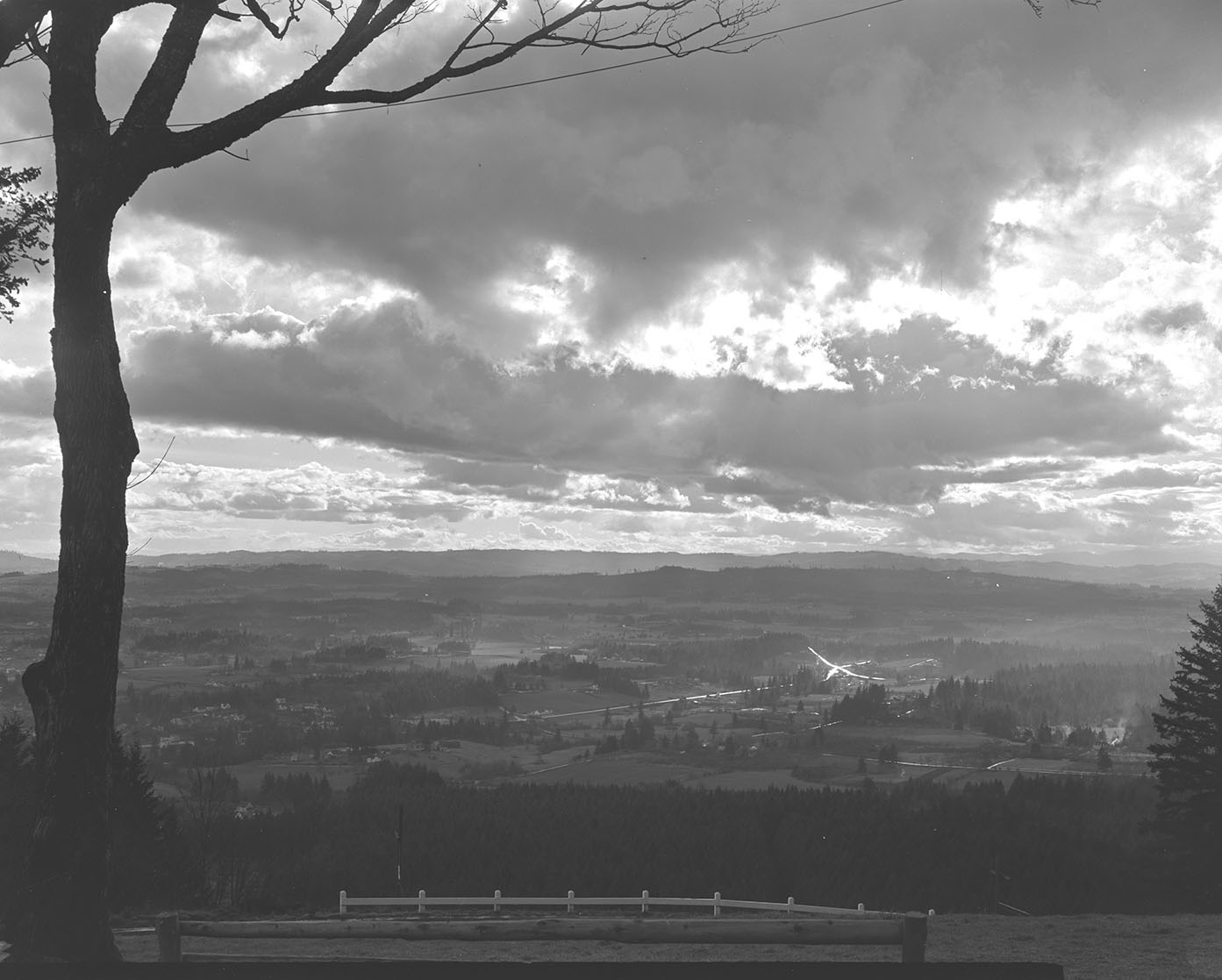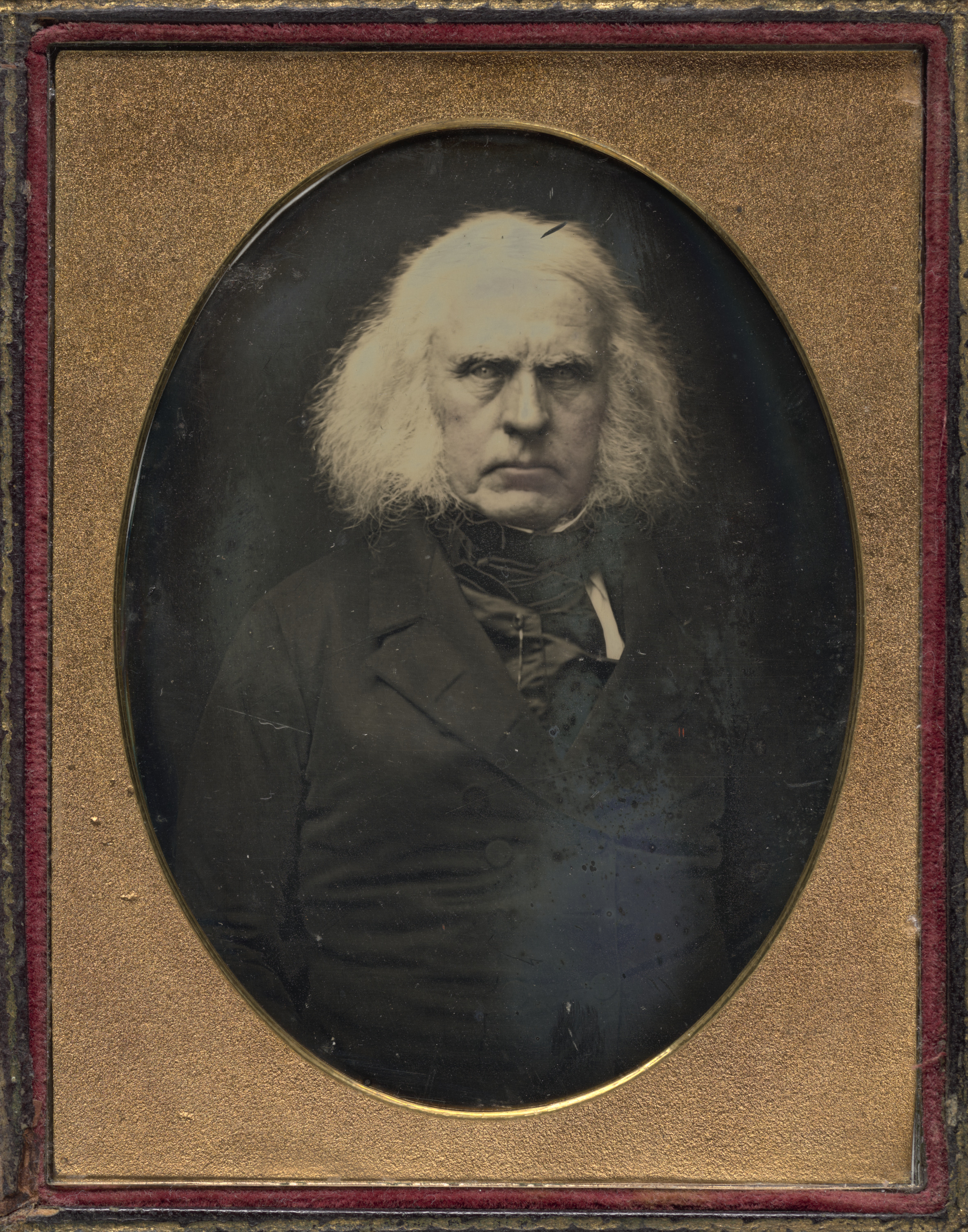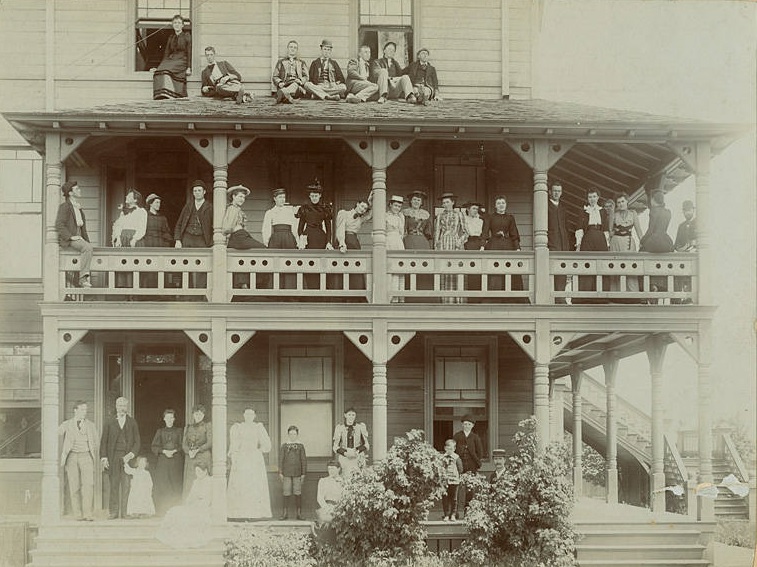Of the 158 names inscribed in the legislative chambers of the Oregon State Capitol, only six are women. One of those is Tabitha Moffat Brown, named by the 1987 Oregon legislature as "The Mother of Oregon." The legislature proclaimed that she “represents the distinctive pioneer heritage, and the charitable and compassionate nature, of Oregon's people."
Tabitha Moffat was born on May 1, 1780, at Brimfield, Massachusetts, the daughter of Dr. Joseph and Lois (Haynes) Moffat. She married the Reverend Clark Brown in 1799, and they had four children. After her husband's death in 1817, Brown taught school before moving to Missouri, where her brother-in-law, Captain John Brown, lived. In the spring of 1846, when she was sixty-six years old, Brown set out for Oregon Country with two of her adult children, their families, and Captain Brown.
Brown’s son, Orus Brown, who had traveled to Oregon Country in 1843, piloted the group in 1846. After they passed Fort Hall in present-day Idaho, some of the family, including Tabitha Brown, took the advice of a guide who claimed they would make better time to the Willamette Valley by following a new cutoff that crossed the southern Cascades and avoided the difficult route across the Blue Mountains and down the Columbia River. The trail would take them hundreds of miles south into the desert country of Utah Territory and California and would finally turn north again, back into Oregon. Tabitha Brown later wrote that "three of four trains of emigrants were decoyed off" by the guide, whom she called a "rascally fellow," who persuaded them to take the new route and promised to clear the road for their wagons, but failed to do so to her satisfaction.
The initial survey for the route—what became known as the Scott-Applegate Trail—had been worked on that year by Captain Levi Scott and fifteen western Oregon settlers, including Jesse and Lindsay Applegate. The improved trail eventually became a standard route, but in 1846 the distances were underestimated and sections of the trail were extremely rough. Moreover, the emigrants' provisions were running low, their oxen were weak, and the travelers were exhausted and demoralized. Historian Malcolm Clark reported that this was "the road to near calamity" for many.
Orus Brown and his family took the traditional route and arrived at Oregon City in September, but winter was setting in by the time Tabitha Brown and others reached the Umpqua Valley. No white settlement was near. Tabitha's daughter, Pherne Pringle, and husband, Virgil Pringle, stayed behind to gather up their remaining cattle, and they insisted that Tabitha travel ahead with the ailing Captain Brown to try to save their lives. "Fly, everyone that can, from starvation" Tabitha Brown later recalled, except for those "compelled to stay by the cattle to recruit them for further travel."
To try to get help from emigrants traveling ahead of them, Tabitha Brown set off with her brother-in-law. Eventually, they met up with other wagons. At the foot of the Calapooya Mountains, the Pringles joined Tabitha Brown and Captain Brown before they began the arduous mountain crossing, managing only a mile or two each day while snow fell.
Their meager food allowance ran out, but Brown retained her trust "in the blessings of kind Providence." Virgil Pringle set out for help and met Orus Brown on his way to rescue the family. Finally, Tabitha Brown reached shelter at the home of a Methodist minister in Salem on Christmas Day, 1846.
Once in Oregon Country, Tabitha Brown found a six-and-a-quarter-cent piece. With it, she purchased needles. She traded old clothes for buckskin and made her way by sewing buckskin gloves, which, she wrote, "cleared me upwards of $30." She also helped nurse the sick and cared for children, sometimes visiting Salem, where her daughter settled, and Tualatin, where her son lived.
In time, Brown became acquainted with and visited missionary families throughout Oregon, including the Reverend Harvey L. Clark and his wife Emeline, who had started a missionary school in 1841 for Indian and part-Indian youth. While staying at the Clark home in West Tualatin (later Forest Grove), Brown shared her dream of providing a school for the children and orphans of pioneers. With the assistance of Clark and the Reverend George H. Atkinson, she planned to open a meetinghouse "to receive all the children, rich and poor."
In the spring of 1848, Brown founded the Oregon Orphans' Asylum and School at Tualatin Plains. A boarding house and a teacher from the East were soon added. In the first year, Brown had thirty student boarders of both sexes, ranging in age from four to twenty-one years old. Jane Kinney Smith, one of the early students, remembered the slight but capable "Grandma" Tabitha Brown kindly managing household affairs.
In 1849, the territorial government chartered the Orphan Asylum as Tualatin Academy. Five years later, in 1854, higher education classes had been added, and the charter was amended to read Tualatin Academy, which closed in 1915, and Pacific University.
Tabitha Moffat Brown died in Salem on May 4, 1858, at the home of her daughter, Pherne Pringle. She was buried at Salem's Pioneer Cemetery with the inscription: "Mother Symbol of Oregon, Co-Founder of Pacific University, Forest Grove, Oregon."
-
![Tabitha Moffat Brown.]()
Brown, Tabitha Moffat, OrHi 53563.
Tabitha Moffat Brown. Oreg. Hist. Soc. Research Lib., OrHi 53563
-
![]()
Tualatin Valley.
Oregon Historical Society Research Library, Org. Lot 52
Related Entries
-
![Applegate Trail]()
Applegate Trail
The Applegate Trail, first laid out and used in 1846, was a southern al…
-
![John McLoughlin (1784-1857)]()
John McLoughlin (1784-1857)
One of the most powerful and polarizing people in Oregon history, John …
-
![Oregon Trail]()
Oregon Trail
Introduction In popular culture, the Oregon Trail is perhaps the most …
-
![Pacific University]()
Pacific University
Pacific University, one of the oldest universities in the American West…
-
![Tualatin, City of]()
Tualatin, City of
The City of Tualatin is twelve miles south of Portland, on the southeas…
Related Historical Records
Further Reading
Brown, Tabitha. "Documents. A Brimfield Heroine-Mrs. Tabitha Brown." Oregon Historical Quarterly 5 (June 1904), 199-205.
Clark, Malcolm, Jr. Eden Seekers: The Settlement of Oregon, 1818-1862. Boston, Mass.: Houghton Mifflin, 1981.
Holmes, Kenneth L., and David Duniway, eds. "A Brimfield Heroine: Tabitha Brown." In Covered Wagon Women: Diaries and Letters from the Western Trails, 1840-1890, vol. 1. Glendale, Calif.: Arthur H. Clark Co., 1983, pp. 47-63.
Smith, Jane Kinney (H.S. Lyman, ed.). "Recollections of Grandma Brown." Oregon Historical Quarterly 3 (Sept. 1902), 287-295.
Ward, Jean M. and Elaine A. Maveety, eds. "Tabitha Moffat Brown." In Pacific Northwest Women, 1815-1925: Lives, Memories, and Writings. Corvallis: Oregon State University Press, 1995, pp. 159-165.







